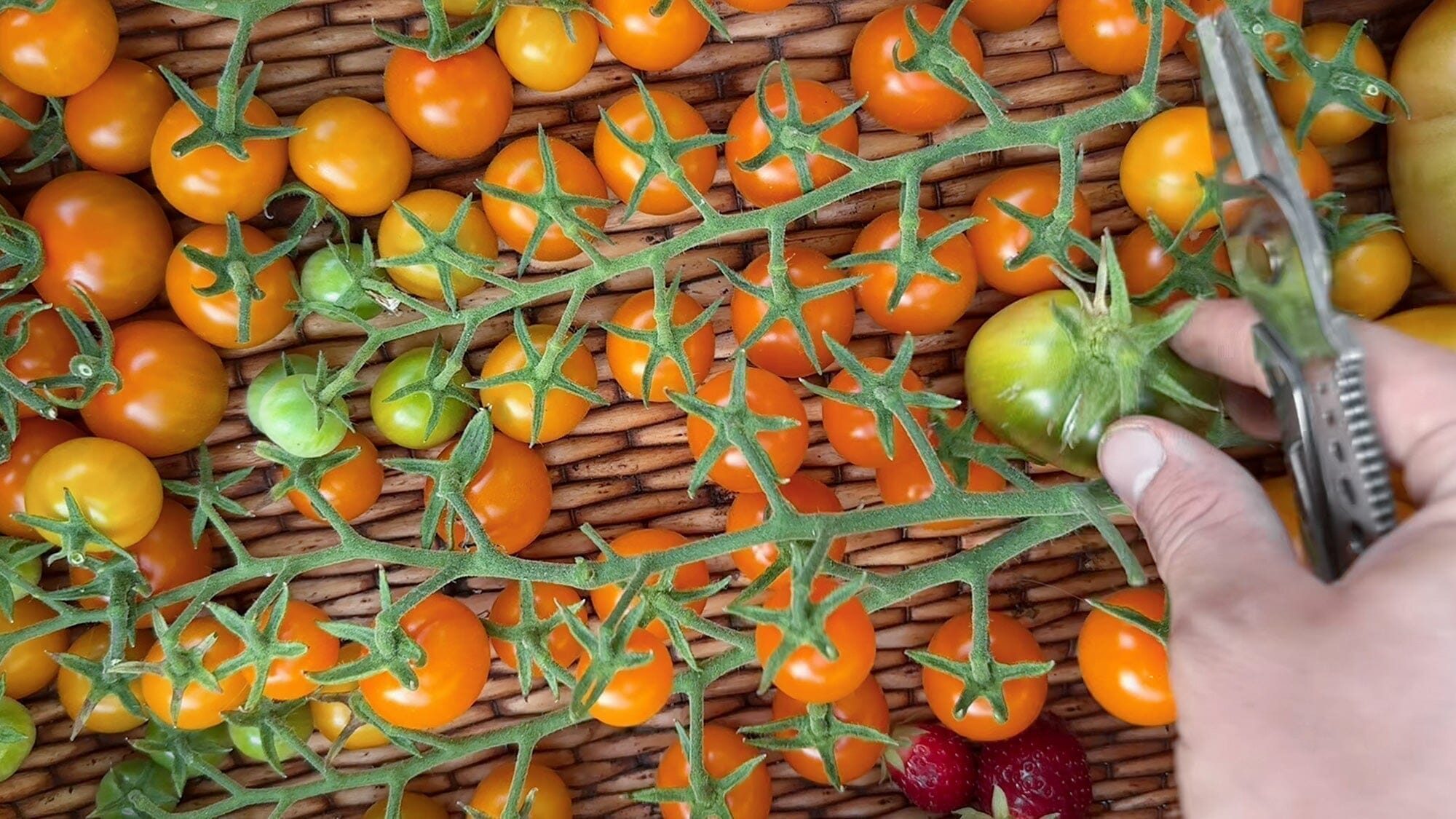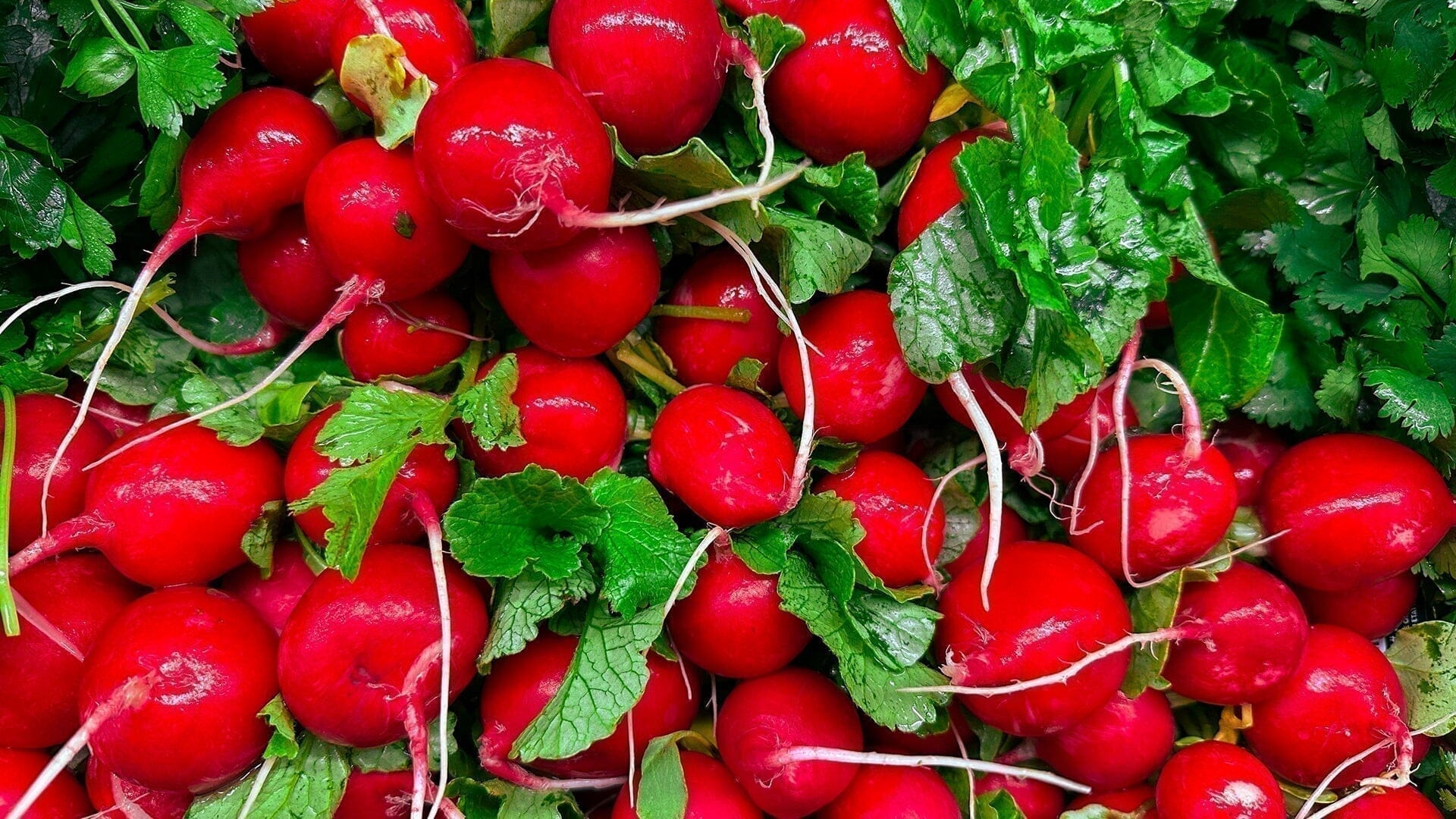Story & Photos by Aaron Aiken
Soil Health - Why It's Important & How To Improve It
When you envision a thriving, beautiful garden, you probably picture a stunning range of flowers, fruits, herbs, vegetables, and more. It’s easy to get caught up in the vibrancy of it all, and while that is exciting, it can be easy to forget about the most important part - the soil.
Healthy, living soil is the foundation of growing your food, and by building it up over time in an organic manner, you can save money and produce better food. It’s tempting to go down the path of purchasing chemical fertilizers, pesticides, and herbicides that promise quick results. But building up your soil the organic way will be worth it and leave you with better soil health in the long run.

That all being said, here are four of my favorite tips for improving soil health & quality.
Garden Compost - Bring Your Soil To Life
Good compost is the number one ingredient for building healthy living garden soil, but not all compost is created equally. Before discussing the good stuff, you need to be wary of the bad stuff. Persistent herbicides used in conventional agriculture can stay active through the composting process, and as such, you need to be cautious of where you get your compost from. Certified organic compost or compost from organic sources is the best you can get. (The more information they provide, the better!) I love to use Malibu Compost in my garden, but there are many excellent composts out there.
So what can the good stuff do for you? Good compost is full of organic material, nutrients, and soil organisms and can bring even the most dead soil back to life.
How to Add Compost To Your Soil
At the end of your gardening season, or before transitioning to the next one, lay 1/4-inch of compost across your planting area. (You can add more if you like (up to an inch), but if using a high-quality compost, you don’t need more than 1/4-inch.) When setting up a new raised bed or container, mix in up to 25% compost or add several inches to the top of the bed. I love to use my garden scoop for spreading compost, and the high sides save the day when moving a lot of material.
Mulch - It’s Not Just For Water Retention
You’ve probably heard that you should be mulching your garden beds to prevent water loss, but did you know it’s also a key part of building soil health? Mulching the surface of your garden provides rich organic material, which is broken down by worms, bacteria, fungi, and more. This organic material directly provides nutrients for your plants.
You can use leaves, grass clippings, straw, pine needles, or whatever else you can get your hands on that covers the soil. Wood chip mulch is fine, but confirm there are no added dyes or chemicals. I would stay away from landscape fabric, as it not only provides no benefits as it breaks down but introduces microplastics into your soil.

No-Till Gardening - Stop Breaking Apart Your Soil
Living soil is not only complex but surprisingly delicate and airy. Tilling is a common practice in modern agriculture, but it operates at the expense of breaking apart the topsoil and subsoil, disturbing the life in both. It can lead to compacted and nutrient-deficient soils. If you're establishing a new garden, some tilling is inevitable as you dig holes for planting. And, if you are overwintering any plants, you will have to cut out the root ball. That being said, you should do your best to leave the soil undisturbed. Doing so will allow the worms to burrow through the soil and aerate it, leaving the microorganisms to do their thing.
No-Till gardening also has the benefit of being much less labor-intensive, which will save time and reduce the physical toil on your body. When your annuals are at the end of their season, chop off the plant at its base and either mulch or compost the stems and leaves. For larger stems, I like to use my Pruner, and when working quickly through smaller stems, I am a huge fan of the Herb Harvest And Strip Tool, which I can keep in my pocket thanks to its small form factor and rounded edge.
Plant A Wider Range of Crops & Rotate
When growing garden staples like tomatoes, it can be tempting to plant everything in groups, and while it may look neat, it is not the best way to care for your soil. Companion planting plants together will pull and put different nutrients from the soil and break up the soil in a more varied manner as different root structures grow through it. Companion planting is a heady topic, but do your best to diversify and mix up what you plant within a season.

As your gardening season ends, it’s wise to plan ahead and rotate your crops. If you planted tomatoes in a portion of your garden this season, plant some leafy greens or legumes the following season. Doing so will improve the health of your soil and help manage soil-borne diseases and pests.
If you are starting a new in-ground garden, it is also worth getting your soil tested. Similarly, if you are setting up a new raised bed or container garden, it is well worth it to start with premium organic soil that will jumpstart the process. The produce from your garden will be more nutrient-rich and healthy than (just about) anything you can find at the farmers market or grocery store. Start gradually, and keeping to these four tips, you’ll be in for some great, healthy soil.
About
Aaron is an urban gardener, garden consultant, and content creator based in Pasadena, California. You can find him creating informative and entertaining garden content on all social media platforms, where he goes by GardenZaddy. He is passionate about educating and empowering families to start growing their own organic food.





